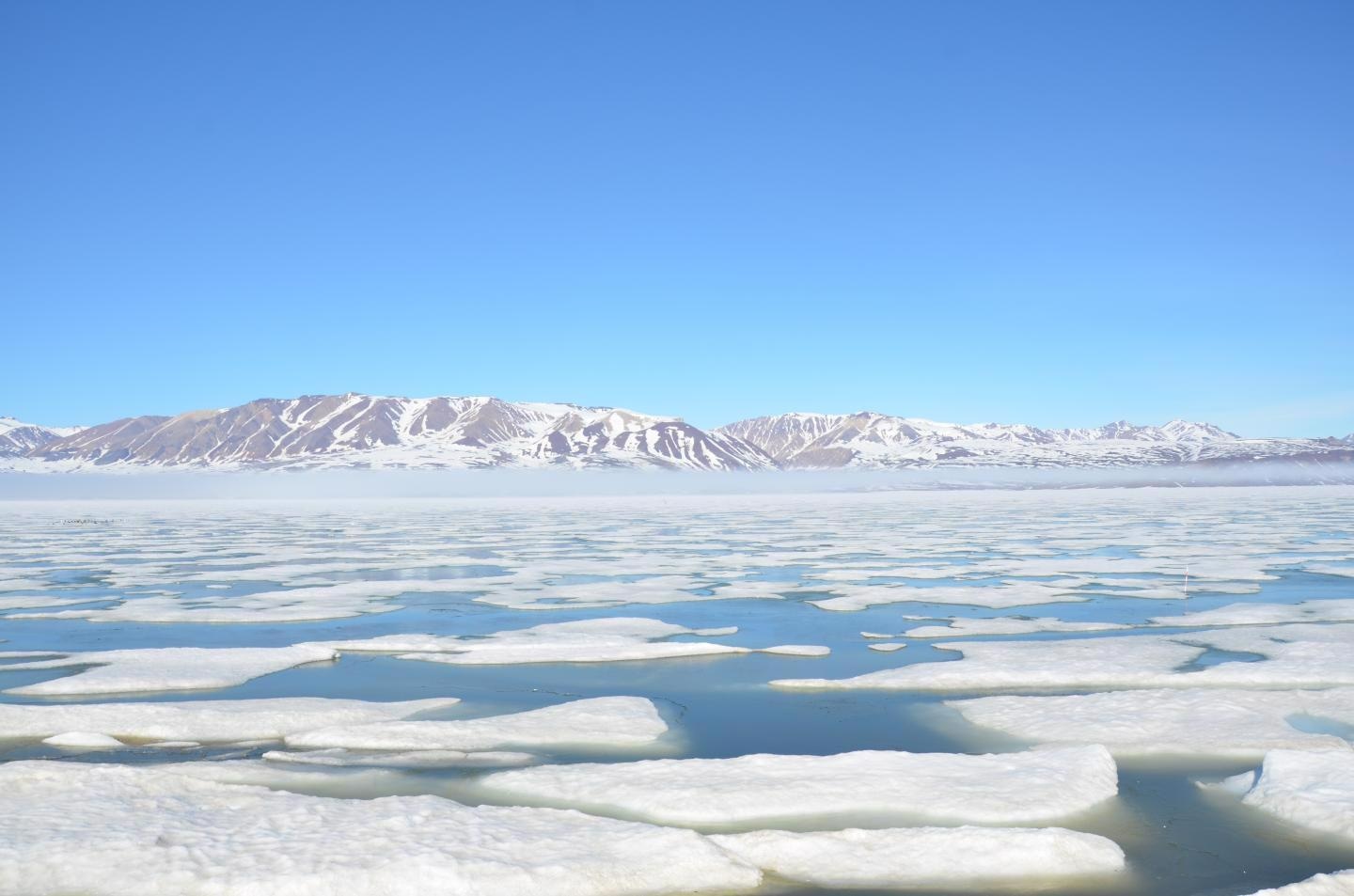Feb 4 2021
In the Arctic, as the sea ice contracts, the plankton community that synthesizes food for the whole marine food web has been changing.

Image Credit: Lars Chresten Lund Hansen and Dorte H. Søgaard.
A new study demonstrates that a possibly deadly species of plankton algae that lives both by carrying out photosynthesis and by absorbing food may turn out to be a significant player in the Arctic Ocean as the future sea ice gets thinner and thinner.
Microscopic plankton algae that are invisible to the naked eye are the basis of the marine food chain and feed all the living creatures of the ocean, ranging from small crustaceans to huge whales. Plankton algae require nutrients and light to synthesize food by photosynthesis.
A thick layer of sea ice, occasionally covered with snow, can decrease the amount of sunlight that penetrates the water and prevent the algae from getting sufficient light. But as the sea ice turns thinner and less extensive in the Arctic, a higher amount of light penetrates the sea.
The study questions whether this indicates more plankton algae and thus more food for more seabirds, whales, and fish in the Arctic. The answer is not so easy.
In the sea, more light results in a greater production of plankton algae if they also have sufficient nutrients, and this is usually not the case. The recent elevation in the levels of freshwater melt from Arctic glaciers and the normal freshening of the Arctic Ocean leads more and more fresh and nutrient-depleted water to run out into the fjords and then into the sea.
The fresher water rests on top of the more salty ocean and prevents nutrients from the deeper layers from blending up towards the surface where there is light. Plankton algae can be active only on the surface.
Mixotrophic Algae Play on Several Strings
A new study published recently in the renowned journal Nature - Scientific Reports demonstrates, however, that the mixotrophic plankton algae might play a vital role in the synthesis of food in the Arctic Sea.
Mixotrophic algae can be defined as small, single-celled plankton algae that can carry out photosynthesis but also produce energy by eating other bacteria and algae. This enables them to survive and grow even when sufficient nutrients and light are not available in the water for their photosynthesis.
A research group from northeast Greenland quantified the production of plankton algae under the sea ice in the high-Arctic fjord Young Sound, situated next to Daneborg.
We showed that the plankton algae under the sea ice actually produced up to half of the total annual plankton production in the fjord. Mixotrophic plankton algae have the advantage that they can sustain themselves by eating other algae and bacteria as a supplement to photosynthesis when there isn’t enough light.
Dorte H. Søgaard, Study Lead, Greenland Climate Research Centre, Greenland Institute of Natural Resources and Arctic Research Centre, Aarhus University
“This means that they are ready to perform photosynthesis even when very little light penetrates into the sea. In addition, many mixotrophic algae can live in relatively fresh water and at very low concentrations of nutrients—conditions that often prevail in the water layers under the sea ice in the spring when the ice melts,” added Søgaard.
Toxic Algae Kill Fish
The team quantified an algal bloom powered by mixotrophic algae found under the thick but melting sea ice in Young Sound for nine days during the Arctic spring in July, when the sun had more power and more melt ponds spread throughout the sea ice, slowly letting in more light.
The algae fall into a group known as haptophytes. Several of these algae are poisonous, and in this research, they flourished in quantities that are similar to those noted earlier in the Skagerrak near southern Norway. In this context, the toxic plankton algae killed huge amounts of salmon in Norwegian fish farms.
We know that haptophytes often appear in areas with low salinity—as seen in the Baltic Sea, for example. It is therefore very probable that these mixotrophic-driven algae blooms will appear more frequently in a more freshwater-influenced future Arctic Ocean and that this shift in dominant algae to a mixotrophic algae species might have a large ecological and socio-economic impact.
Dorte H. Søgaard, Study Lead, Greenland Climate Research Centre, Greenland Institute of Natural Resources and Arctic Research Centre, Aarhus University
The team that conducted the project emphasizes that it is the first-ever time that a bloom of mixotrophic algae has been recorded under the sea ice in the Arctic.
Journal Reference:
Søgaard, D. H., et al. (2021) An under-ice bloom of mixotrophic haptophytes in low nutrient and freshwater-influenced Arctic waters. Scientific Reports. doi.org/10.1038/s41598-021-82413-y.